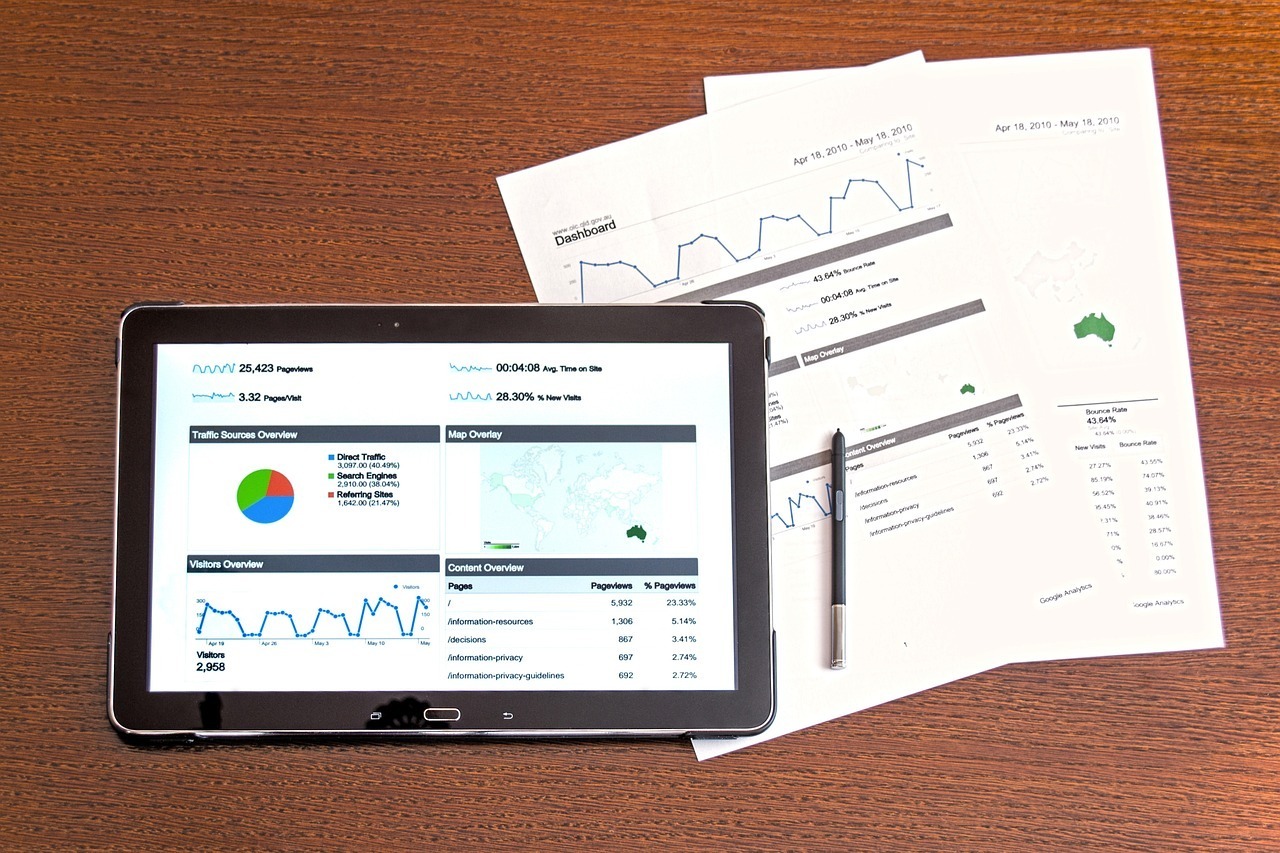The Best Methods to Stay Informed With the Latest e-Commerce Trends
According to a European e-commerce report, business-to-consumer (B2C) e-commerce turnover rose to €887bn in 2023.
Staying up-to-date with the latest e-commerce trends can help business owners optimise their websites and sales channels to capture a larger share of this market. Unfortunately, it can be challenging to keep up with recent trends, but a few methods can help.
Changes to e-commerce trends can dictate entire strategies. They can help businesses determine what's working and what should be altered. Some of the best ways to keep track of the latest trends include:
Google Trends
An excellent method of keeping up with trends is using the Google Trends platform to analyse how interest in particular terms/topics has risen or fallen across a specific period. It's even possible to compare two or more topics to determine relative interest between multiple trends.

A robust method for tracking e-commerce trends is to set up Google Alerts for relevant keywords like 'payment processing' or 'e-commerce'. Google Trends can then be used to analyse interest in specific keywords, find related topics, and gauge importance within their target countries.
For example, Google Trends shows that Barbados is interested in crypto payment gateway solutions. This data indicates that people and businesses within the country are seeking a seamless way to use and accept crypto, likely due to its ease of cross-border payments and currency conversions.
Follow industry leaders
Another popular way of tracking e-commerce trends is to follow industry leaders on platforms like X, LinkedIn, Instagram, and Facebook. These people often share personal business anecdotes or research reports they find relevant, curating the most valuable content and delivering it to their followers.
It's advisable to create new accounts to keep track of trends because it will prevent irrelevant content from being displayed and will not impact your personal algorithm.
Following people who are prominent in industries like e-commerce, business, marketing, advertising, and web development can yield interesting trend data.
Monitor e-commerce research reports
It's common for research or market trend analysis firms to periodically release reports on topics like e-commerce, buyer trends, or digital payments. These reports are invaluable as they're produced by experts and provide data-driven analysis to assist with decision-making.

For example, the J.P. Morgan Global E-Commerce Trends Report provides detailed insights breaking down e-commerce trends by country. Reports like this can help businesses better cater to their most significant customer bases and better understand what to prioritise, depending on the market.
Some of the top sources for research reports include EuroCommerce, J.P. Morgan, McKinsey & Company, and Nielsen Norman Group. Some businesses also release reports derived from their own data, which can provide helpful and highly specific insights.
Yes, absolutely! Let's make it better by incorporating EETA more explicitly and humanizing the tone further. We'll refine the language, add more direct advice, and enhance the flow to make it even more engaging and helpful.
Here's an improved version:
Your Passport to Online Success: Demystifying Dropshipping & E-commerce
Ever dreamed of being your own boss, setting your own hours, and building something truly yours? In today's digital landscape, that dream is more within reach than ever before, thanks to the incredible world of e-commerce. Whether you're a seasoned entrepreneur or just dipping your toes in the water, understanding e-commerce and its popular cousin, dropshipping, can open up a world of possibilities. Let's pull back the curtain and show you how to start your very own online adventure!
What Exactly Is E-commerce?
Think of e-commerce as your shopfront on the internet. Instead of bricks and mortar, you have pixels and code. It's simply the act of buying and selling goods or services over the internet. From that quick Amazon purchase to buying a handcrafted item from a small independent artist, it's all e-commerce. It's revolutionized how we shop, making the world our marketplace and allowing businesses, no matter their size, to reach customers far beyond their local area. The beauty? You can literally operate your business from anywhere with an internet connection – a coffee shop in London, a beach in Thailand, or your cozy home office.
And What's This "Dropshipping" Everyone's Talking About?
Now, dropshipping is a clever twist on the traditional e-commerce model. Imagine you want to sell trendy t-shirts, but you don't want to buy hundreds of them upfront and store them in your spare room. With dropshipping, you don't have to! Here's how it works:
- You set up your online store (we'll talk about how in a bit!).
- A customer places an order for a t-shirt on your website.
- You then purchase that exact t-shirt from a third-party supplier (often a manufacturer or wholesaler).
- The supplier ships the t-shirt directly to your customer.
You never touch the product! This means:
- Tiny Startup Costs: No need to tie up your savings in inventory. This is HUGE for new entrepreneurs.
- Massive Product Variety: You can offer thousands of products without worrying about storage space.
- Ultimate Flexibility: Run your business from anywhere in the world. Want to travel? Your store travels with you.
Of course, it's not entirely without its quirks. You're relying on your supplier for product quality and shipping, and profit margins can sometimes be slimmer. But for many, it's the perfect entry point into online business.
Ready to Launch? Your E-commerce Action Plan!
Feeling a spark of excitement? Excellent! Here’s a straightforward path to getting your online business off the ground, whether you choose dropshipping or a more traditional inventory model:
- Find Your Niche & Passion (The "Aha!" Moment): What lights you up? What problem can you solve for others? Don't just sell "stuff." Think about a specific audience or interest. Do you love eco-friendly products? Pet accessories for small dogs? Unique home decor? Niching down helps you stand out and connect with your ideal customers.
- Source Your Products (Your Secret Sauce):
- For Dropshipping: This means finding reliable suppliers. Platforms like AliExpress, SaleHoo, or dedicated dropshipping apps within e-commerce platforms can connect you with thousands of products. Look for good reviews and clear communication.
- For Traditional E-commerce: You'll be looking for manufacturers, wholesalers, or even creating your own handmade goods. Think quality, uniqueness, and profit potential.
- Build Your Online Store (Your Digital Home): Don't be intimidated! User-friendly platforms like Shopify, WooCommerce (for WordPress users), or BigCommerce make it incredibly easy. They offer beautiful templates, secure payment processing, and all the tools you need to manage your products and orders. It's like having an architect design your dream shop, without the huge fee.
- Make it Shine (Your Shop Window): This is where you bring your brand to life. Use high-quality, professional photos. Write compelling product descriptions that tell a story, not just list features. Make sure your website is easy to navigate, with a clear checkout process. Think about your customer's journey – make it smooth and enjoyable!
- Spread the Word (Let the World Know!): Having a great store is only half the battle. You need customers!
- Social Media: Engage with your audience on platforms like Instagram, TikTok, or Facebook.
- SEO: Optimise your website so people can find you on Google.
- Paid Ads: Consider Facebook Ads or Google Ads for targeted reach.
- Email Marketing: Build an email list and offer exclusive deals.
- Content Marketing: Start a blog related to your niche.
- Deliver Amazing Customer Service (Your Reputation Builder): This is where true success lies. Be responsive, be helpful, and go the extra mile. Happy customers become loyal customers and spread positive word-of-mouth – the best marketing there is!
People Are Always Asking (PAA): Your Burning Questions Answered!
- Is dropshipping still a good idea in 2025? Absolutely! While the landscape is more competitive, dropshipping remains a fantastic low-risk way to enter e-commerce. Success now hinges on building a strong brand, offering unique products (or unique angles on common products), and providing exceptional customer service. It's about being smart, not just selling cheap.
- What's the hardest part about running an e-commerce business? Often, it's getting consistent traffic and converting visitors into paying customers. Another big one is managing customer expectations, especially when dealing with shipping times or returns. Don't underestimate the power of good marketing and solid customer support.
- How much cash do I really need to get started? For dropshipping, you can realistically start with very little – perhaps £50-£200 for your first month's e-commerce platform subscription and some initial ad spend. For traditional e-commerce, it depends on your inventory. You might need a few hundred to a few thousand pounds to cover initial stock. The beauty is you can start small and scale up!
- What kind of products sell best online right now? It's always changing, but general trends include sustainable products, personalised items, health & wellness goods, pet supplies, unique home gadgets, and anything that solves a common problem. Always do your research to find a niche with demand but not overwhelming competition.
- Can I do this while working a full-time job? Many, many successful e-commerce entrepreneurs started exactly this way! Dropshipping is particularly well-suited for a side hustle because you're not bogged down by inventory management. Automate what you can, dedicate specific hours, and be prepared to learn as you go.
Starting an e-commerce business is an exciting journey, filled with learning, challenges, and incredible rewards. It's about building a piece of the internet that's truly yours. So, take the leap, embrace the learning curve, and get ready to unlock your entrepreneurial spirit!
Conclusion
E-commerce trends can provide actionable insights into consumer behaviour that people can use to optimise their businesses.
While e-commerce trends can be challenging to follow, tracking search queries, learning from industry professionals, and reading reports from research firms are excellent methods of locating and curating data that can provide actionable insights.













